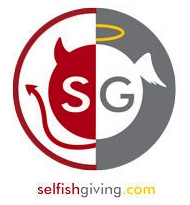Crowdfunding for Nonprofits & Businesses: 7 Best Practices
Crowdfunding expert discusses how brands can use this proven strategy
Today on CauseTalk Radio, Megan and I talked to Richard Swart, the Director of Research on Crowdfinance at University of California at Berkeley and author of the World Bank’s Report On Global Crowdfunding, on how nonprofit and for-profit brands can strategically use crowdfunding.
Companies across America are partnering with nonprofits and crowdfunding platforms to leverage their social reach and extend their CSR messaging. Crowdfunding has become an accepted CSR activity, with very little downside and incredible potential.
For Richard, crowdfunding is when people are asked to vote with their wallets to support a product or project - instead of with their "likes" or social media impressions. It began in the arts community in 2008 when groups usedcrowdfunding to get their films backed. From there it was adopted by nonprofits and for-profits alike.
The best example of crowdfunding in the nonprofit space is Donorschoose.org.
7 BEST PRACTICES FOR CROWDFUNDING1. Let your employees have many voices and causes
Rather than using a committee or advisory group, equip your employees with some basic knowledge of crowdfunding and let them raise funds for the causes they care about in their local community.
2. Find multiple partners
Through well-executed crowdfunding campaigns, companies can start communicating with and form partnerships with a number of other companies or community organizations. Since the outreach happens through social channels driven by customers and community members, the other organizations are much more likely to want to help you.
3. Extend your media reach
The media tracks and reports on novel and interesting crowdfunding campaigns – firms can take a local project and garner regional or national press through a creative crowd-funding campaign
4. Add gamification and competition
Run an innovation challenge and offer to match the donations made by other community groups that work to solve a problem you've identified. By adding competition and rewards, you can have multiple small community groups competing to be the most effective at solving issues in your CSR wheelhouse – and the social reach is magnified.
For example, Timberland's Serv-a-Palooza Challenge 2014, a six week sponsored volunteerism effort, encouraged people to use Crowdrise to volunteer and fundraisefor a cause of their choice. Using the hashtag #TimberlandServes entered them into a contest to win prizes and have donations to a cause made on their behalf by Timberland.
5. Align physical brand with causes and giveaways
Create unique products or give-aways that are only available in store if you are a retail firm, or in the location of one of your community partners if you are not. Create an experience, a party, rally or some other event, but make participation contingent on a certain level of donation through crowdfunding. Smart brands figure out how to drive social engagement into stores.
6. Use your voice in a way customers will want to hear
Too many companies only talk about themselves. Leverage your social reach by backing and supporting the crowdfunding campaigns of groups your support. Many times your social voice is worth more than your donation.
7. Use video
Effective crowdfunding requires the use of engaging and creative video – allow your employees to take part (borrowing from Delta Airlines highly successful inflightsafety videos) – by using Video based and creative campaigns, the campaign can live on in YouTube or other sites long after the crowdfunding campaign has ended.
Effective videos are well within the reach of even the smallest nonprofits. Take the example of this video for the volunteer-led Telescopes for Tanzania. The video helped T4T to exceed its goal of raising $38,000 via Indiegogo.
Richard is passionate about crowdfunding, and believes it's the future of fundraising for two important reasons.
1. People live in social media and digital space. This is especially true of the younger generation.
2. Millennial mistrust of formal institutions means they want to go straight to impactful projects without having to deal with a middleman. They want to see the impact.
So while crowdfunding is the future, brands need to proceed cautiously and authentically. Dodge Dart is one brand that has successfully navigated this tricky road with Dodge Dart Registry.
"Dodge is a great example of a company that listened to its audience," said Richard.
Millennials helped a lot of organizations receive cars and rewarded Dodge without a lot of car sales, which skyrocketed after the fundraiser.
SPECIFIC ADVICE FOR NONPROFITSStart Small
Pick a small project to fund as a test. Pick something that's tangible. People won't crowdfund for a general increase in operating funds. Your goal should be to fund a project through a series of crowdfunding campaigns.
Be Tangible
Show how the project directly impacts the people you are trying to help. Choose a project that is an ongoing effort (e.g. digging wells in drought stricken areas) because 1 in 5 crowdfunding donors will donate again.
Story, Story, Story!
Tell a powerful story. Potential donors, especially Millennials, will accept nothing less.
Carefully Choose a Minimum Donation
A best practice is to have an entry-level donation of $20 to $25 dollars. Something affordable, but meaningful. Offer higher levels that include special access to your organization and your work.
This episode of CauseTalk Radio concludes with Richard's thoughts on the future of micro-giving and the realities of crowdfunding transactional costs.




